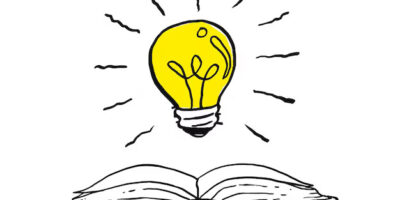The American Presidential Election consists of a “heroic” competition between an Ass and the Elephant in the room, at least so long as Deez Nutz isn’t around (look him up). However, until the elephant in the room emerges victorious from the stampede of trying to be the biggest, reddest and Trumpiest we might as well enjoy the show.
The number of Asses this time round is pretty spares and current front runners Hillary “I’m sorry my emails are insecure” Clinton, Lincoln “the most honest” Chafee, Martin “fundamentally democrat” O’Malley and Bernie “politically correct” Sanders don’t have a whole lot to worry about in terms of competition, at least until the circus arrives, although that isn’t stopping them from slinging at least a bit of mud.
Meanwhile, the twenty strong herd is busy fighting for the spot of alpha male, or alpha female as the case may be for some. The competition is fierce but leading the race is the Trumpiest and most racist Donald “Erect a wall across the border to Mexico” Trump. However, he faces at least some competition from the surprisingly camouflaged Ben “I’m so blue I’m red” Carson and Jeb “I’m another Bush” Bush, not to mention everyone’s favourite Ted “I’m not Canadian anymore” Cruz. This is an incomplete list but suffice it to say they are all really just different takes on the same rhetoric. This year the Grand Old Party is having a Grand Old time in debates and county fairs, receiving far more coverage than the democrats due to their personalities.
What’s the difference between an Ass and an Elephant, you may ask? Well, generally speaking, the Asses are like the Conservative party before Stephen Harper and the Elephants are the Conservative party after Harper, assuming he chose to repeal gun laws, same-sex marriage, universal healthcare and the right to choose. But enough with bringing Canadian politics into this – unless Rob Ford wants to “weigh in” – below is a table showing each parties general stances on various issues.
Democrats
Economically the Democrats are buddy-buddy with the Liberals and NDP Canada. Just imagine they are all Thomas Mulcair pushing his plans for universal healthcare, social programs, tax brackets that focus on helping the lower classes and taxing corporations and the rich. That being said they are also worried about the environment and keeping jobs state-side, and unlike Trump they haven’t suggested walls, which is a pleasant surprise. Rather ironic that the colors are so backwards across the Canadian border, though Canada has the gun-control, abortion laws and same-sex marriage laws the Democrats would like to implement. And unlike the “Trump”-eting elephants they are quite content to let illegal immigrants remain in Canada to start on a road to citizenship. So in summary, Red or Orange in Canada = Blue south of the border.
Republicans
The Republicans are a brand of Harper, but only if that Harper were from Texas and not Canada. They are all for the laissez-faire economic structure – pardon my French – which focuses on free markets and very limited government spending. They aren’t cutthroats and do try to provide a minimal level of support but they believe a free market is a good market. Depending on how purple you want to get you can find Republicans who vary their opinions on most social and environmental policies. However, when the constitution is involved things really come to a head (and by head I mean Head of State issue). If the Republicans were to get the presidency they would try to enforce a much stricter alignment of laws with the constitution, including upholding the right to bare arms and total religious freedom. This then yields leeway to open up debates on abortion and same-sex marriage which as Canadians we know are difficult issues to discuss.
So why do we care?
As Canadians, worrying about the American election may seem somewhat pointless, especially when someone decides to call an early one in your nation *cough Harper cough*. However, the financial and political impact this election has on Canada is profound. Every American election has serious implications on our trade relations with the States, and if they start going one way on social policy and we start going in a drastically different direction, there may be friction that no amount of Canadian oil can lubricate. Canada has always taken a more liberal stance on social policy and so far that hasn’t caused too much issue, but economic changes may lead to some rather unfavorable trade relations and foreign exchange rates that would be preferable to avoid.
Why are we discussing the US election over a year in advance?
TL;DR because the US is.
As for the actual reason, it has to do with the most confusing shitshow of an electoral system that was devised in the days when men on horses had to ride around to communicate the result. In the briefest terms possible, the American election undergoes a series of steps. First, presidential candidates announce that they will be running and register with a party (you can register alone but the sheer cost of the election makes it not worth it (unless your name starts with T- and ends in -rump)).
Once that is over Caucuses and Primary elections are held, during which parties in each state vote for who they want to nominate for president. Often times they are closed to non-party members but in some cases they aren’t. There is then a childish fight of “me-first” between states who want to be first in line to nominate a candidate. Eventually, when the dust clears and all that nonsense is done with, both parties will hold Conventions where the state votes are tallied in addition to the votes of party VIPs. A decision is made on who wins, although typically everyone else drops out because they lost in too many states.
Finally, we can start the real election now. You might think the storm is over but it is just beginning. Now the votes for President occur. This is done via the Electoral College which “distributes” 438 Electoral College votes loosely based on population, but not really, to the different states. On election day you go to the poll and vote. The winner in the State gets all the Electoral College votes that State has, even if they only won by 10 votes. Once this is done the Electoral College representatives vote in the College. What does this mean? Well, people who represent each of the states cast the votes they have for the candidate that won in their state. But that would make too much sense. They actually have no obligation to follow what the people of their state told them. They always have but nowhere is it stated this is a requirement. Those votes are tallied and we finally have a president.
Basically, a vote for President in the States can have a disproportionately high value in some states due to this system, which was devised to handle a problem which no longer exists. Ergo in the name of engineering efficiency it should be replaced with a better system but it hasn’t been because America and History. (You may be able to tell I am rather passionately angry about this whole system.)
So getting back to the point, the American election coverage has started because the process takes a really long time and in order to resolve everything they need the 1.5 year campaign to get it all done. Just be glad we finish in just under 80 days.
In Summary AKA TL;DR
The Good Old Party is back to its loud old self in debates and the Democratic Asses are getting ready to fluke it out in an almost two year electoral process which is wildly inefficient and full of hilarious, ludicrous and often racist (I apologize to both Mexicans and Muslims) comments. But this is just the beginning; we still have over a year to go before the most convoluted election system in the Western world kicks into gear. So stay tuned.
Signing off – Calder




Leave a Reply